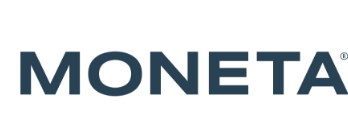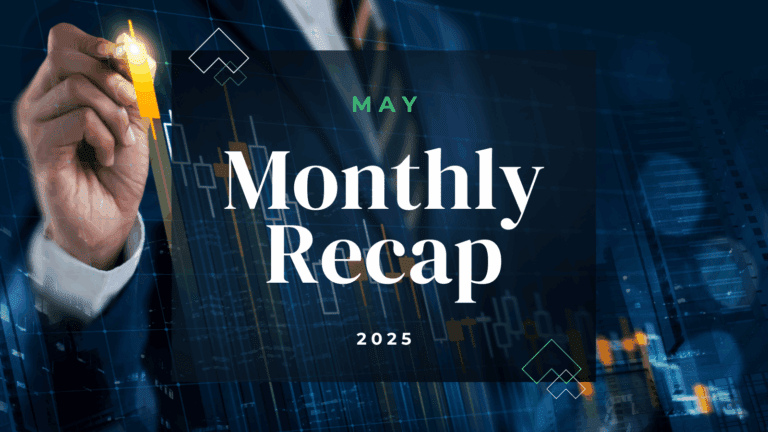Quarterly Letter
“Capitalism without failure is like religion without sin. It doesn’t work.”
– Allan Meltzer, Historian for the Federal Reserve
If market pundits had known that the first half of 2023 would contain a few of the biggest bank failures in U.S. history, and the astounding collapse of military control in Russia, they surely would have made dire warnings for investors. If there is one thing stock markets hate, it is failure and uncertainty. Instead, markets quickly shrugged off both events, resulting in a particularly strong June and a nicely positive first half for virtually all stock market participants.
As we move to the second half of the year investors are wrestling with three interrelated investment concerns: inflation, interest rates and the potential for a recession. Inflation first exploded in the Fall of 2021 so, after spending several months in denial, the Federal Reserve pivoted from its accommodative stance to begin an unprecedented string of ten consecutive interest rate increases. The Fed did not take a breather from this until just last month, when it said it wanted to better assess the implications of the tightening done to-date.
Interest rate increases are typically made by the Fed to slow an economy to keep inflation in check – it is called “monetary tightening” by economists – and this historically has taken a year or two to fully impact the economy. Current tightening is indeed working, as inflation has declined over the past year, but more gradually than desired. After rising above nine percent a year ago, inflation has dropped to half that level today, but still well above the Fed’s two percent target level. Fortunately, numerous indicators point to the declining inflation momentum continuing, although the Fed remains hawkish and has suggested that another few interest rate hikes are likely later this year.
While the economy is slowing under the pressure of higher interest rates, there are a few signs of a recession in the near term. Nonetheless, unemployment claims are low, but rising; banks are generally healthy, but loan volumes have diminished, and industrial manufacturing is okay, but has slowed. Additionally, corporate profits, while hanging in there, have softened. Perhaps the most significant omen is the inverted yield curve. Why is that particularly important? Because an inverted yield curve occurs when short-term interest rates rise above longer-term interest rates and is as sure a sign for a future recession as exists.
An inverted yield curve, however, only predicts a recession; it reveals nothing about the severity of a recession. If a recession does come later this year or in 2024, most believe it will be of the milder variety. Time, of course, will tell, but that makes sense to us. There are no obvious signs of asset bubbles such as we had in 2000 and 2008.
As mentioned, global stock indices were positive in the first half, and the S&P 500 Index, a proxy for large U.S. stock performance, was up a strong 16.9 percent. It was a first half, however, in which investors were laser-focused on a relatively few big U.S. technology behemoths – Apple, Microsoft, Google, Amazon, NVIDIA and Meta (Facebook). These six companies produced over eighty percent of the S&P 500 Index total gain over the past six months. The rest were up, on average, but not by a lot, yet these six alone added three trillion dollars of market cap to their valuations. Remarkable. More dollars, for example, than the total market capitalization of the nearly two thousand stocks in the Russell 2000 Index, which represents smaller U.S. companies.
On the fixed-income side of the investment world, bond investors, you will recall, had their worst year in four decades in 2022. Interest rates soared, and the value of existing, lower interest rate, bond investments declined in value. The bond market has stabilized in 2023, but investors looking for higher returns face difficult “maturity” choices with new bond purchases. Do they stick with very short-term investments such as money market funds, Treasury Bills and Certificates of Deposits, where interest rates can exceed 5 percent? Alternatively, should they extend maturities to ten or more years and lock in interest rates between 3.5 and 4.5 percent? If a recession occurs, interest rates, particularly short-term interest rates, will probably decline rapidly. Not an easy choice, but our inclination is to continue to stay relatively short – less than five years with most bond purchases.
We started this commentary with a quote on failure, and how it is an unpleasant but necessary by-product of capitalism. The occasional failure of a business allows better-managed companies to emerge and excel and serves as a notable reminder to investors of the importance of diversification. We have nothing specific to suggest, but we can see a lot of reasons other “failures” might occur over the next six to twelve months. Interest rates are up, there are a lot of commercial office buildings without enough tenants, and we still have a war in Europe and troubles with China. Thus, we are not predicting a particularly strong second half for performance and will be happy to hold recent gains for a time.
As we move farther into 2023 and 2024, we also know the tea leaves tell us we may well have a recession. Nonetheless, markets tend to perform in the most unexpected ways, and at the most unexpected times, as we saw again in the first half of 2023.
As Peter Lynch once said, “The real key to making money in stocks is not to get scared out of them.” We most certainly won’t.
Nonetheless, markets tend to perform in the most unexpected ways, and at the most unexpected times, as we saw again in the first half of 2023.

Market Commentary
- Stock markets rallied in June, rounding out a generally strong first half of 2023. It was a welcome rebound from 2022, navigating through debt-ceiling negotiations, stubborn inflation, tighter monetary policy, a still strong labor market, a few bank failures, and flattish, although better than expected, corporate earnings.
- U.S. Large Cap stocks, as measured by the S&P 500 Index, are up 17% year-to-date, while Small Cap stocks are up 8%. Top performers remain concentrated, however, primarily in the rebounding Technology sector. Battered in 2022, Growth stocks have soared, while Value and dividend-oriented strategies are lagging the broader market. International Developed and Emerging Markets stocks are up 12% and 5%, respectively.
- After raising interest rates three times this year, the Fed opted to pause in June with the caveat that more hikes could be necessary depending on economic data. Markets reacted favorably to the pause, although expectations remain for perhaps two more interest rate increases later this year. The Fed is in the difficult position of trying not to do too much, while not doing too little, to tame inflation and prevent a recession.
Inflation Cooling
- To quash inflation, the Federal Reserve in 2022 began the most rapid interest rate-hiking cycle in history. Higher rates are designed to create headwinds for consumer and business spending. Nonetheless, higher rates take time to have impact, although the lagged effects of Fed tightening policy have clearly begun to be reflected this year in moderating inflation figures. The Fed Funds target rate, shown at the right, also surpassed CPI inflation in the second quarter, an important indicator that the Fed’s hawkish stance is working.
- As the Federal Reserve has aggressively hiked interest rates, 2- and 10-Year Treasury note yields have created a pronounced inverted yield curve, graphically shown in the chart to the lower right. Inverted yield curves have historically been a reliable indicator for a recession in coming quarters, likely late this year or in early 2024.
- Many economists expect inflation to continue trending lower in the coming months. The trajectory of prior inflationary periods validates this expectation, as shown below. Note: prior inflation spikes have been quite symmetrical, falling at a similar pace to the climb.

Now What?
- No two economic cycles are the same, and the uniqueness of today’s rate-hiking cycle, the most aggressive in 40 years, adds uncertainty to predictions based on past data. Nonetheless, it is worth noting that historical data suggests that stocks and bonds both do well in the year following the end of a Federal Reserve tightening cycle, as shown in the chart below. Emerging Market stocks tend to be the biggest winners.
- Despite the Federal Reserve’s 10 rate hikes since March 2022, stocks have surprisingly outperformed bonds over that time period, with the S&P 500 Index up more than 20% from its lowest point late last year.
- Given big gains in stocks in the first half of 2023, and the potential for a recession later in the year or early 2024, investors should probably expect somewhat more modest returns from stocks for a time.
Narrow Participation
- The dominance of technology-oriented Growth stocks, namely Apple, Microsoft, Tesla, Amazon, Alphabet, NVIDIA, and Meta Platforms (Facebook), significantly influenced broader market performance, with these seven (some calling them the “Seven Sisters”) providing about 85% of the S&P 500 Index’s gains in the first half of 2023. The narrow concentration of winners is clearly reflected by the chart to the right, with most market sectors having much more modest performance.
- While much of the 2023 stock market gains can be attributed to a rebound after being battered in 2022, the incredible surge of interest in Artificial Intelligence (AI) has also significantly boosted the market this year.
New Chapter for International Equities
- The U.S. dollar has shown signs of weakening after reaching a 20-year high in 2022. A weakening dollar, even marginally, could provide a backdrop for longer-term international equity outperformance.
- As shown at right, there have historically been very long trends of a stronger dollar, then a weaker dollar. The recent strong dollar trend, which peaked in October, 2022, began in the depths of the Great Recession in 2008-2009, but followed a weaker Dollar trend that had begun shortly after 9/11
Bond Yields More Attractive
- As the Fed rapidly raised interest rates throughout 2022, bond prices plummeted. The Bloomberg U.S. Aggregate Bond Index experienced its worst year in its history last year, as shown below.
- On the bright side, the bond market’s reversal in 2022 has made bond interest rate yields look far more attractive. As shown to the right, bond yields are 1.4 to 2.5 times higher than when the Fed first raised interest rates in March 2022, offering investors yields not seen in more than a decade.
Contributors
© 2023 The Finerty Team
The S&P 500 Index is a free-float capitalization-weighted index of the prices of 500 large-cap common stocks actively traded in the United States. The Bloomberg US Aggregate Bond Index is a broad base, market capitalization-weighted bond market index representing intermediate term investment grade bonds traded in the United States. The Consumer Price Index (CPI) is a measure of the average change over time in the prices paid by urban consumers for a market basket of consumer goods and services.
Advisory services offered by Moneta Group Investment Advisors, LLC, (“MGIA”) an investment adviser registered with the Securities and Exchange Commission (“SEC”). MGIA is a wholly owned subsidiary of Moneta Group, LLC. Registration as an investment advisor does not imply a certain level of skill or training. The information contained herein is for informational purposes only, is not intended to be comprehensive or exclusive, and is based on materials deemed reliable, but the accuracy of which has not been verified.
Trademarks and copyrights of materials referenced herein are the property of their respective owners. Index returns reflect total return, assuming reinvestment of dividends and interest. The returns do not reflect the effect of taxes and/or fees that an investor would incur. Examples contained herein are for illustrative purposes only based on generic assumptions. Given the dynamic nature of the subject matter and the environment in which this communication was written, the information contained herein is subject to change. This is not an offer to sell or buy securities, nor does it represent any specific recommendation. You should consult with an appropriately credentialed professional before making any financial, investment, tax or legal decision. An index is an unmanaged portfolio of specified securities and does not reflect any initial or ongoing expenses nor can it be invested in directly. Past performance is not indicative of future returns. All investments are subject to a risk of loss. Diversification and strategic asset allocation do not assure profit or protect against loss in declining markets. These materials do not take into consideration your personal circumstances, financial or otherwise.







